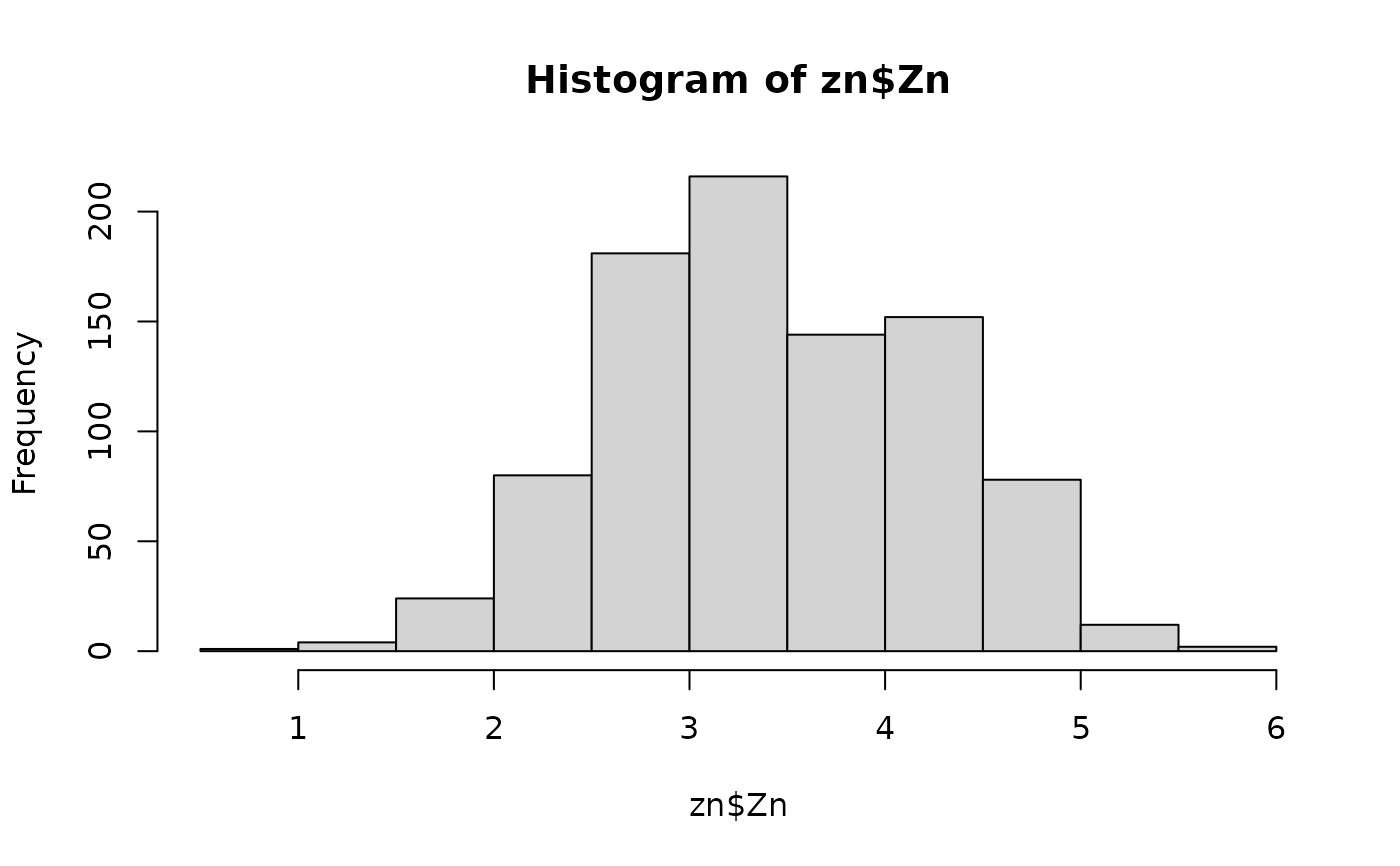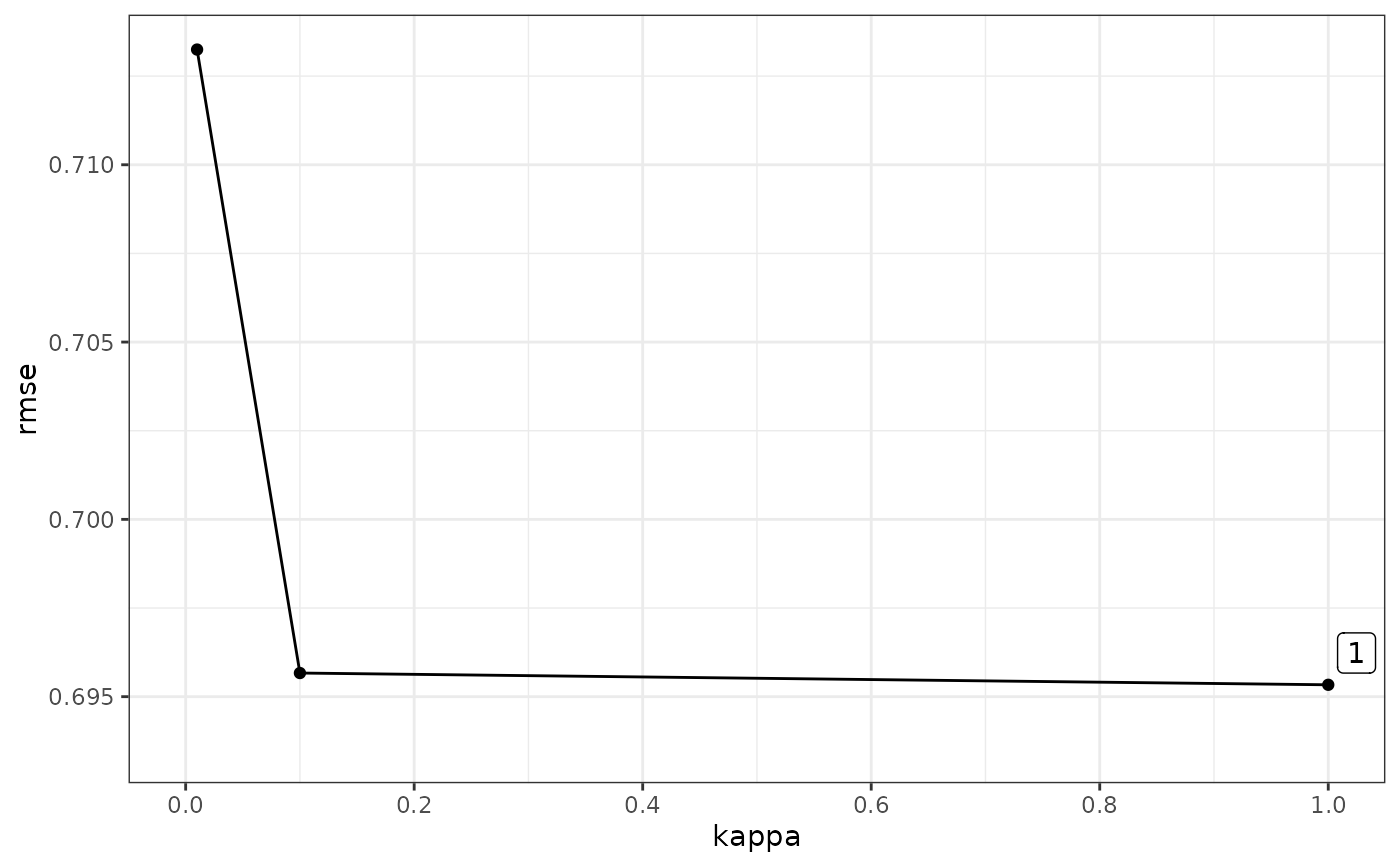Computationally optimized function for determining the best kappa parameter for the optimal similarity
Usage
gos_bestkappa(
formula,
data = NULL,
kappa = seq(0.05, 1, 0.05),
nrepeat = 10,
nsplit = 0.5,
cores = 1
)Arguments
- formula
A formula of GOS model.
- data
A
data.frameortibbleof observation data.- kappa
(optional) A numeric value of the percentage of observation locations with high similarity to a prediction location. \(kappa = 1 - tau\), where
tauis the probability parameter in quantile operator. kappa is 0.25 means that 25% of observations with high similarity to a prediction location are used for modelling.- nrepeat
(optional) A numeric value of the number of cross-validation training times. The default value is
10.- nsplit
(optional) The sample training set segmentation ratio,which in
(0,1). Default is0.5.- cores
(optional) Positive integer. If cores > 1, a
parallelpackage cluster with that many cores is created and used. You can also supply a cluster object. Default is1.
Value
A list.
bestkappathe result of best kappa
cvrmseall RMSE calculations during cross-validation
cvmeanthe average RMSE corresponding to different kappa in the cross-validation process
plotthe plot of rmse changes corresponding to different kappa
References
Song, Y. (2022). Geographically Optimal Similarity. Mathematical Geosciences. doi: 10.1007/s11004-022-10036-8.
Examples
data("zn")
# log-transformation
hist(zn$Zn)
 zn$Zn <- log(zn$Zn)
hist(zn$Zn)
zn$Zn <- log(zn$Zn)
hist(zn$Zn)
 # remove outliers
k <- removeoutlier(zn$Zn, coef = 2.5)
#> Remove 9 outlier(s)
dt <- zn[-k,]
# determine the best kappa
system.time({
b1 <- gos_bestkappa(Zn ~ Slope + Water + NDVI + SOC + pH + Road + Mine,
data = dt,
kappa = c(0.01, 0.1, 1),
nrepeat = 1,
cores = 1)
})
#> user system elapsed
#> 1.800 0.005 1.805
b1$bestkappa
#> [1] 1
b1$plot
# remove outliers
k <- removeoutlier(zn$Zn, coef = 2.5)
#> Remove 9 outlier(s)
dt <- zn[-k,]
# determine the best kappa
system.time({
b1 <- gos_bestkappa(Zn ~ Slope + Water + NDVI + SOC + pH + Road + Mine,
data = dt,
kappa = c(0.01, 0.1, 1),
nrepeat = 1,
cores = 1)
})
#> user system elapsed
#> 1.800 0.005 1.805
b1$bestkappa
#> [1] 1
b1$plot
